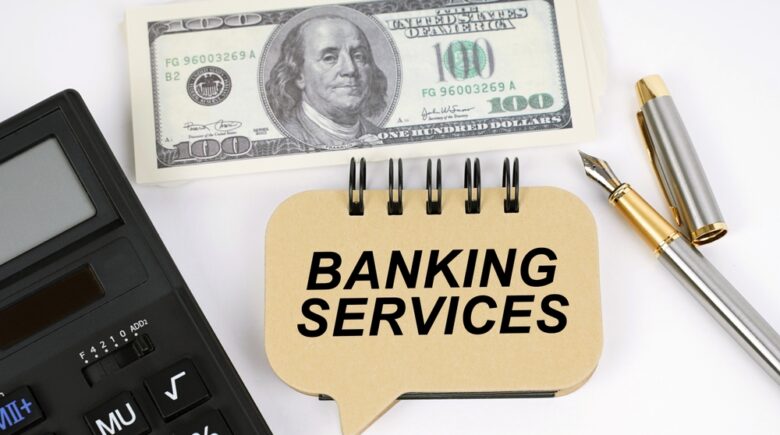As the net population grows, homeownership rates and incomes increase, and people become higher earners, many consumers are moving into the marketplace’s top tier. Often those that do not even have a bank account leave their finances in peril until they choose one that fits their needs.
However, choosing the “right” bank account is often difficult for consumers because there is so much information about banking options. In addition, it is easy to need clarification on the myriad of banking products on the market. To help consumers select a bank account (and also a credit card) that best fits their needs, they need to know what features to look for when picking the correct account.
- Consider the type of account that you will be using.
Are you going to be making deposits and withdrawals regularly? Will you need to rely on your account to receive direct deposits or other types of payments? Are there any particular features you will need, such as bill-paying features or overdraft protection?
- Research all fees.
Find out what fees are required, if any, before opening an account with a bank. When signing up for a new account, ask about processing fees and any potential fees for withdrawal or deposit transactions at ATMs that are not affiliated with your bank. What about monthly maintenance fees? (Some banks will waive these if certain conditions are met).
- Make sure you have an account that fits your needs.
A checking account is the best option if you plan to make multiple monthly deposits and withdrawals. If you only need to make a deposit occasionally, consider a savings account instead. Remember to check for applicable fees before opening an account, such as monthly maintenance fees or fees for using ATMs outside your network.
- Consider banking with different institutions, especially during seasonal financial changes.
If you have many accounts, open them all in the same bank and ensure you are comfortable with the fee structure. It may be an option to open an account in another institution if, for example, there is a cheaper fee or you feel more comfortable with their customer service.
- Know the different types of accounts your bank offers.
Check out the rate and fees for all your bank accounts to see which fits your preferences best. Some banks offer interest rates on savings and checking accounts, while others will only pay interest in statement credits. You can also find a bank offering a flat rate for all their checking and savings accounts.
- Look into online banks.
If you want to avoid paying fees every time you withdraw or deposit, your best option may be an online bank. These institutions do not have physical branches so you can access your funds via any computer with internet access. Some institutions may only allow fee-free withdrawals at ATMs affiliated with the bank. Still, they often offer more interest on their savings and checking accounts than traditional banks do.
- Shop around for the best interest rate.
Even if you have an existing account at a bank, check what rates the other banks in your area offer. Call another bank and ask about their checking and savings accounts to see if they offer better interest rates or have better fees. You can also find online banks that offer higher interest rates for some of their checking and savings accounts.
- Consider what will fit into your budget.
Not all accounts will work for your interests or budget, so try to find the one that will work best with both factors in mind. You can find different fees and maintenance requirements depending on the institution that you choose to work with. Be sure to research these fees before signing up for an account. Use a credit union instead if a bank does not work for you. Credit unions tend to be much smaller institutions, but they can offer better interest rates than banks.
- Understand your overdraft options.
Many banks offer overdraft protection on their checking accounts, which means that if you write a check or withdrawal too much money from your account, they will cover the charges and take it out of your next deposit or another part of your balance (or both).
- Set up an automatic savings plan.
You can ensure that a predetermined amount is saved each time you get paid by establishing an automatic savings plan. This plan will deduct the money from your paycheck before it reaches your hands. This way, you do not have to worry about saving money. If you need help saving money this way, look into online banks that allow you to link your checking account for automatic deposit and withdrawal of funds.
- Allocate your funds before opening a new account.
If you want to avoid leaving money in an inactive account, consider setting goals at your new bank for when you will need to transfer all of the money from your old account to the new one. Sometimes, a savings account will have all the same features, but you may have a $50 maximum that you can deposit each month from your checking account instead of transferring all your funds at once.
You can take advantage of a high-yield certificate of deposit if you are looking for a method to maximize the return on the interest you earn. Even though the interest rates are typically higher, it may be worth the risk of having your money locked up for longer than in traditional savings accounts. This will depend on the amount of money you want to deposit and the length of time you want to keep it in the account.
- Be smart about investing if you are looking at a savings account or certificate of deposit (CD).
If you are saving a significant amount, consider putting your money in an investment account instead of a savings account if the institution allows it. You can earn more with this option, and you can also find different investment products that will enable you to invest in stocks or even bonds.
- Research different types of accounts before opening one.
Some financial institutions offer two types of accounts: basic and premium. A basic account will have fewer features and fewer fees associated with it than a premium account. Still, both accounts can often be used for most transactions similar to what you expect from a checking or savings account.
Checking and savings accounts can be a great way to help you save money, but making the most of them is essential. If you want to avoid paying high fees and still get the most interest on your savings, search for an account that will work best for your needs. Consider the types of accounts different financial institutions offer and compare them against one another by researching their terms and conditions online or calling each institution directly to ask about their bank policies.



